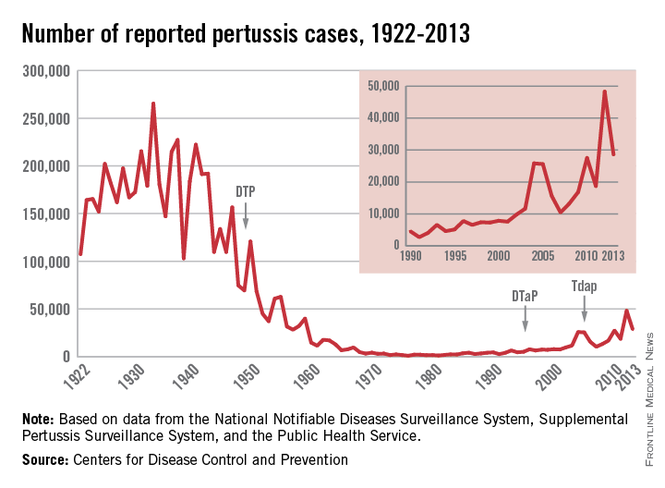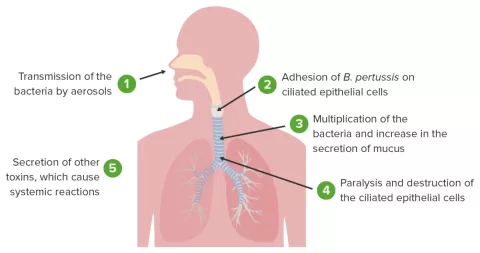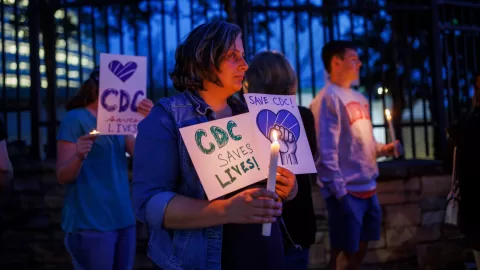The recent Washington pertussis death has highlighted the critical importance of childhood vaccinations against preventable diseases like whooping cough. This tragic event marks the first pertussis-related fatality in the state since 2011, serving as a stark reminder of the potential consequences of incomplete immunization. According to the US Centers for Disease Control and Prevention (CDC), pertussis cases have surged, surpassing levels seen prior to the COVID-19 pandemic, prompting a CDC pertussis alert. The child, who was under five years old, had received some doses of the diphtheria-tetanus-acellular pertussis vaccine (DTaP) but had not completed the full series, underscoring the need for comprehensive vaccination. As the healthcare community grapples with this loss, it reinforces the ongoing conversation about the importance of keeping vaccination rates high to prevent future outbreaks.
The recent report of a fatality due to whooping cough in Washington has sparked renewed discussions surrounding the necessity of childhood immunizations. This incident, the first of its kind since 2011, has drawn attention to the alarming rise in pertussis cases, as highlighted by the CDC’s latest warnings. The child involved, who had not completed their full vaccination series, exemplifies the vulnerabilities present in communities with incomplete immunization coverage. With the CDC issuing a pertussis alert, health officials are emphasizing the importance of timely vaccinations to protect young lives from preventable diseases. As we navigate the challenges posed by various pathogens, including emerging strains of SARS-CoV-2, this incident serves as a poignant reminder of the critical role that vaccines play in safeguarding public health.
Pertussis Death in Washington: A Wake-Up Call
The recent pertussis death reported in Washington state marks a tragic reminder of the importance of childhood vaccinations. The Spokane Regional Health District (SRHD) confirmed that a child under the age of five succumbed to whooping cough, a preventable disease, highlighting the critical need for public health initiatives aimed at increasing vaccination rates. According to the CDC, the number of pertussis cases in 2024 was alarmingly higher than those observed prior to the COVID-19 pandemic, necessitating urgent attention from health officials and parents alike.
Despite the availability of effective vaccines, the child had not completed the full diphtheria-tetanus-acellular pertussis (DTaP) vaccination series. This underscores the challenges faced in maintaining routine immunizations during health crises, like the COVID-19 pandemic. The CDC’s recent alerts serve as a crucial reminder for parents to ensure their children receive timely vaccinations to protect them against whooping cough and other vaccine-preventable diseases.
Understanding the CDC Pertussis Alert
The CDC’s announcement regarding the uptick in pertussis cases demands immediate attention from healthcare providers and parents. With the confirmed death of a child from whooping cough, the CDC has raised alarms about the rising incidence of this disease, which can lead to severe respiratory complications, especially in young children. The agency emphasizes the significance of maintaining high vaccination coverage to prevent outbreaks, especially as communities recover from the impacts of COVID-19.
Furthermore, the CDC has been proactive in monitoring these cases and issuing alerts to inform the public and healthcare professionals about the risks associated with pertussis. This alert not only serves to increase awareness but also encourages parents to stay informed about their children’s vaccination schedules, thereby ensuring that they are protected against whooping cough and other infectious diseases.
The Impact of Childhood Vaccinations on Public Health
Childhood vaccinations play a crucial role in safeguarding public health by preventing the spread of infectious diseases like whooping cough. Vaccines such as the DTaP are designed to build immunity in children, reducing the incidence of diseases that once caused significant morbidity and mortality. The recent pertussis death in Washington serves as a stark reminder of what can happen when vaccination rates decline and immunization programs are disrupted.
Continued education and outreach about the importance of childhood vaccinations can help counter misinformation and hesitancy that may have arisen during the pandemic. Health organizations, including the CDC and WHO, are urging parents to adhere to recommended vaccination schedules to ensure their children are fully protected against diseases like pertussis and to contribute to community immunity, thereby protecting those who cannot be vaccinated.
The Resurgence of Dengue: A PAHO Alert
The Pan American Health Organization (PAHO) has issued an alert concerning the resurgence of dengue serotype 3 (DENV-3) in the Americas, indicating a potential public health crisis. With over 13 million reported cases of dengue in 2024 across 50 countries, the rise of this serotype, which had been dormant for a decade, raises concerns about severe cases and the capacity of healthcare systems to respond to an epidemic.
PAHO’s proactive stance emphasizes the need for member countries to enhance their preparedness and response strategies. Early diagnosis and timely treatment are crucial to mitigating severe dengue cases, which can lead to significant morbidity and mortality. This alert not only highlights the importance of mosquito control measures but also stresses the need for community awareness and participation in preventing the spread of dengue.
Navigating SARS-CoV-2 Variants: Ongoing Surveillance
As the COVID-19 pandemic continues to evolve, the CDC’s latest updates on SARS-CoV-2 variants underscore the necessity of ongoing surveillance and public health measures. The recent shift in the proportions of variants, including the stable rates of XEC and the rise of LP.8.1, indicates that while the immediate health risks remain classified as low, the situation is dynamic and requires continuous monitoring.
The emergence of new variants can have implications for vaccine efficacy and public health responses. Therefore, it’s imperative that health authorities remain vigilant and adaptive in their strategies to manage COVID-19, ensuring that vaccination efforts are bolstered to protect against both current and emerging variants.
The Importance of Timely Vaccinations
Timely vaccinations are essential for preventing outbreaks of diseases like pertussis and dengue. The recent incidents in Washington and the PAHO alert serve as critical reminders for parents and communities about the importance of adhering to vaccination schedules. Vaccines not only protect individuals but also contribute to herd immunity, which is vital for those who cannot be vaccinated due to medical reasons.
Health campaigns focusing on the importance of staying up to date with vaccinations can significantly impact public health. By ensuring that children receive their recommended doses, communities can reduce the risk of outbreaks and protect vulnerable populations, effectively preventing the resurgence of preventable diseases.
Community Engagement in Vaccination Efforts
Community engagement is a powerful tool in improving vaccination rates and public health outcomes. By fostering a culture of participation and awareness, communities can encourage parents to prioritize their children’s vaccinations against diseases like whooping cough and dengue. Educational initiatives and partnerships with local health organizations can help dispel myths and misinformation surrounding vaccines, increasing overall acceptance.
Moreover, community leaders play a critical role in promoting vaccination as a societal norm. By organizing vaccination drives and providing accessible information, they can help ensure that families understand the importance of immunization, ultimately leading to healthier communities and reducing the burden of infectious diseases.
Global Perspectives on Vaccine-Preventable Diseases
Globally, vaccine-preventable diseases remain a significant public health challenge. The rise of pertussis cases in the U.S. and the resurgence of dengue in the Americas illustrate the need for a coordinated global response to vaccination efforts. As countries work to recover from the COVID-19 pandemic, it is crucial to refocus on routine immunizations and public health measures that have historically contributed to controlling infectious diseases.
International health organizations, such as the WHO and CDC, continue to advocate for comprehensive vaccination programs that address not only current threats but also prepare for future ones. By sharing resources and strategies, countries can improve their vaccination coverage and protect their populations from outbreaks of diseases like whooping cough and dengue.
The Future of Vaccinations in a Post-Pandemic World
As the world emerges from the COVID-19 pandemic, the future of vaccinations will play a pivotal role in shaping public health landscapes. The experiences of the pandemic have highlighted the importance of robust vaccination programs and the need for adaptive strategies to address new challenges and emerging variants. Ensuring that childhood vaccinations remain a priority will be essential in preventing the resurgence of diseases like pertussis and dengue.
Looking ahead, a focus on innovation in vaccine development and distribution will be crucial. Public health agencies must collaborate with researchers and pharmaceutical companies to enhance vaccine availability and efficacy, ensuring that all populations, particularly vulnerable groups, have access to life-saving vaccinations.
Frequently Asked Questions
What are the recent updates on Washington pertussis death cases?
In February 2025, Washington state recorded its first pertussis (whooping cough) death since 2011. A child under 5 years old died from complications related to pertussis in November 2024, as confirmed by the CDC. This incident highlights the importance of timely childhood vaccinations to prevent such fatalities.
How does the Washington pertussis death relate to childhood vaccinations?
The recent Washington pertussis death underscores the critical role of childhood vaccinations. The child had received some doses of the DTaP vaccine but did not complete the full vaccination series. Full vaccination against pertussis is essential to protect children from severe complications and death.
What did the CDC say about pertussis cases in Washington?
The CDC reported that pertussis cases in Washington and across the country were higher in 2024 than the levels seen before the COVID-19 pandemic. This increase emphasizes the need for awareness and adherence to vaccination schedules to prevent outbreaks.
What are the potential causes behind the recent Washington pertussis death?
The recent Washington pertussis death involved a child who had underlying health conditions that may have contributed to the fatal outcome. Although pertussis was the primary cause, coexisting health issues can significantly impact a child’s ability to recover.
What actions are being taken in response to the Washington pertussis death?
Following the Washington pertussis death, health authorities are likely to increase public awareness about the importance of completing childhood vaccinations. Educational campaigns may focus on the dangers of pertussis and the need to maintain high vaccination coverage to prevent future deaths.
How can parents protect their children from pertussis in light of the recent death in Washington?
Parents can protect their children from pertussis by ensuring they complete the DTaP vaccination series on schedule. It is crucial to follow up with healthcare providers to confirm vaccinations are up-to-date, especially in light of the recent Washington pertussis death.
What is the significance of the Washington pertussis death for public health?
The Washington pertussis death serves as a significant public health alert, indicating the need for renewed emphasis on vaccination programs. It highlights the potential resurgence of vaccine-preventable diseases and the importance of maintaining herd immunity through comprehensive vaccination efforts.
Are there any alerts from health organizations regarding pertussis in Washington?
Yes, the CDC has issued warnings about increased pertussis cases nationally, including Washington. They advise parents and guardians to ensure that their children are vaccinated according to the recommended schedule to prevent future cases and deaths.
| Key Points | Details |
|---|---|
| Washington Pertussis Death | First pertussis death in Washington state since 2011 confirmed. Victim was a child under 5 years old who died in November 2024. |
| CDC Warning | Increased pertussis cases observed in 2024 compared to pre-pandemic levels. |
| Vaccination Status | The child had received some doses of the DTaP vaccine but did not complete the full series. |
| PAHO Dengue Alert | PAHO issued an alert for increased DENV-3 circulation in the Americas, warning of potential severe cases. |
| Dengue Statistics | Record dengue activity in 2024 with over 13 million cases reported across 50 countries. |
| SARS-CoV-2 Variants | CDC updated estimates show XEC is 43% prevalent, LP.8.1 at 20%, with low health risk. |
Summary
The recent Washington pertussis death highlights the critical importance of childhood vaccinations. This unfortunate case, involving a child under 5 years old, serves as a reminder of the dangers posed by preventable diseases like whooping cough. The Spokane Regional Health District has confirmed that this is the first pertussis-related death in the state since 2011, emphasizing the need for complete vaccination to protect children from such life-threatening illnesses.
The content provided on this blog (e.g., symptom descriptions, health tips, or general advice) is for informational purposes only and is not a substitute for professional medical advice, diagnosis, or treatment. Always seek the guidance of your physician or other qualified healthcare provider with any questions you may have regarding a medical condition. Never disregard professional medical advice or delay seeking it because of something you have read on this website. If you believe you may have a medical emergency, call your doctor or emergency services immediately. Reliance on any information provided by this blog is solely at your own risk.








